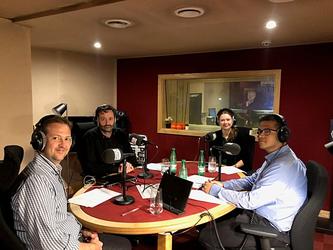Behind the social media conversation

Historically, research teams have been encouraged to work faster and more efficiently, because marketing moved faster than market research did. In the technology industries, this pressure can be even more pronounced because of the speed at which companies can change their core product, never mind their marketing.
Take food companies, for example. Fundamentally altering their product can require changes throughout the supply chain – from packaging design right through to how factories or plants are set up. For a tech firm, such change involves experimentation and then an update to the code.
This is still a significant undertaking, but undoubtedly faster than making physical changes to a factory. As a result, almost all the researchers I’ve met from other technology companies cite agility and speed as the main priorities for their teams. Broadly, I’ve found research teams in Silicon Valley exploring three areas to help them with this:
- Develop data science and automation skills so researchers can access and use behavioural data directly, without having to work through an intermediary team
- Invest in quick turnaround methodologies, such as community research or mobile panels
- Explore new sources of insights, particularly social media.
Much has been written about the first two points, so I wanted to focus on the third. Social media research has grown significantly in popularity over the past few years. According to the latest GreenBook GRIT report, 55% of clients and 41% of research suppliers have now adopted some sort of automation for their social media research programmes. Yet I still believe we’re only scratching the surface of what social media data can offer research teams.
Since 2016, I’ve been a judge for the Social Media Research Award, part of the annual Market Research Society Awards. As accolades season has come, it seemed like a good time to reflect on the innovations we have seen through these award submissions, and offer a view on how to get the best from your social media data.
It would be bizarre to attend a focus group and not spend a moment considering the people involved, their backgrounds or beliefs, and how that might shape what they say. The same applies to social media data. It’s easy to look at what people are saying, but the most insightful analysis comes from teams who understand that audience deeply. Consider spending time evaluating the audience around a conversation, their interests and influencers, and how these change over the period of your analysis.
The most creative and actionable social media research is done by teams that consistently look more broadly at consumers’ lives and that don’t simply focus on brand keywords. For example, if you are researching conversations related to banking, limiting yourself to branded keywords will probably only pull in complaints and customer service queries.
Instead, look much more widely, for the moments in people’s lives when they might need a bank. This is how people naturally use social media – to talk about their holidays, their children or their new homes. Understanding these moments offers a much richer source of insight than simply monitoring conversation around a specific brand.
We’ve seen some fantastically innovative work done that uses social media as a predictor of consumer behaviour or brand health – everything from insurance risks to movie-ticket sales. Consider what business metrics might be predicted by the conversation of a particular group of consumers, run some experimental models, and see how this might add to your existing brand or business-tracking programmes.
Social media data is a major component of any fast, agile research team, but frame it as a source for insight and not solely for measurement. Go deeper into defining audiences, cast the analysis net wide enough to capture insights into consumers’ lives, and then think how your team could use the results to predict business metrics, rather than report them in isolation.

We hope you enjoyed this article.
Research Live is published by MRS.
The Market Research Society (MRS) exists to promote and protect the research sector, showcasing how research delivers impact for businesses and government.
Members of MRS enjoy many benefits including tailoured policy guidance, discounts on training and conferences, and access to member-only content.
For example, there's an archive of winning case studies from over a decade of MRS Awards.
Find out more about the benefits of joining MRS here.












0 Comments